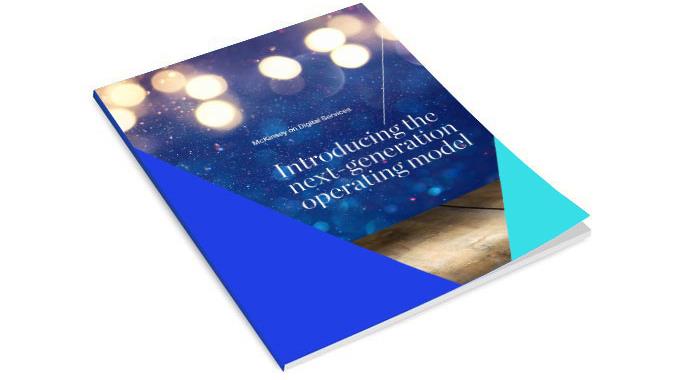Anthem wanted to transform itself from a healthcare business that uses technology into a technology company that runs a healthcare business. That required a comprehensive digital adoption strategy, enterprise-wide buy-in, the ability to attract and retain new talent, and a tolerance for failure. Anil Bhatt, vice president and head of digital solutions and experience for Anthem, discusses his company’s digital journey with McKinsey’s Barr Seitz.
Reinventing Anthem through a digital transformation
The digital transformation at Anthem really started in early 2017. While we had small, incremental mobile-application or portal initiatives going on, we did not have a deep transformation of digital going on across our financial, HR, and other functional areas. In March 2017, we combined all our efforts together to drive the deep transformation that we needed from within to really improve the experience for our constituents.
Stay current on your favorite topics
At that time, my team was around 2,000 people from a total of around 3,000 people engaged in the digital transformation. So it was a pretty huge effort across the board. The team was a mix of technology, business, customer-service, and functional leaders who were engaged on a day-to-day basis.
As a result of this transformation, we essentially moved from being a healthcare business that was using technology to being a technology company that is running a healthcare business.
Leadership around what matters
As you are embarking on your digital journey, one thing that is very important is having the tolerance for failure and the tolerance for adjustments as you move forward. Nothing will be perfect from day one.
The main thing for you to understand as a leader is to make sure you see a measurable difference in the way the team is executing, that you see the commitment the team has toward the planned deliverable, and that the team is moving in the right direction on those initiatives they want to deliver.
Providing the right focus, the right leadership, and showing them exactly what is expected will result in a great product for you at the end of the day. Having that patience and conducting regular check-ins to make sure the team is really moving in the right direction is terribly important.
What you do not want is to lose contact with the team and experience a surprise in six months. That’s the worst-case situation. You also can’t worry about small missed milestones here and there. If you are too hung up on missing a milestone on any given day, you’ll lose focus on the big picture, and it ends up demoralizing the team. So as a leader, you have to make those assessments and encourage the team that it is heading on the right path.
Important management challenges
A digital transformation needs a lot of things to come together at the same time. In this case, we really wanted to make sure that we had buy-in from the business leaders and had the processes, change management, and everything else in place. We started off by bringing together the key leaders from across the organization, making sure that they were all following the digital agenda of Anthem and understood what their role in this execution would be.
Lastly, we also made sure that change management across the board was very well understood. You can build great digital tools, but if you don’t create a great adoption strategy to go with them, they won’t be adopted. So we had our internal and external adoption strategy in place to maximize the usage of these digital tools.

Introducing the next-generation operating model
Key learnings
One of the things we learned in our journey was to make sure we were focused on creating a best-in-class experience for our constituents. That meant revamping the way our journeys were defined within our company and examining what each journey needed from a product-ownership and execution perspective. It also meant moving toward more-nimble development and a fail-fast approach.
Another one of the surprises for me was to see how much enthusiasm there was in each functional area within Anthem to really do better for their members. When we identified what digitization of their processes and experience could do for them, they really jumped on it. They were really the proponents of delivering those benefits to our members, our brokers, and our providers.
What also surprised me was that, while we had the talent, we lacked the existing structure to execute in an agile way. So we focused on building a more agile organization, identifying key product owners who were going to help us define the road map we wanted to execute. We also developed an execution backbone to support quick delivery and speed to market by using these digital tools.
Identifying quick wins to create future funding models
We had to look at our talent and investments across the board and take a plan back to our leadership that spelled out what we needed to be a digital-first organization. We wanted to show measurable differences on the investment our leaders were going to make.
A lot of the initiatives we executed provided us results within the year, which basically created the future funding model for new initiatives we wanted to undertake. Identifying your quick wins, identifying where you can make a very big difference with a minimum investment, and then using that as an impetus for your future leap on the digitalization journey is very, very important.
I’ll give you an example. We pushed for digital ID cards as an option through our self-service channels. This allowed members to get an ID card on their mobile or print one from our portals. That reduced the expense of sending ID cards to these members, which was a direct savings that we could articulate.
Filling the talent gaps
Talent is a major issue when embarking on a digitalization journey. One of things we did was create a road map of the talent we needed to be successful. We then worked with our HR teams to identify roles for these individuals and revamped our compensation and reward structures to make sure we could entice this new talent to join us.
When you have computer-science graduates just coming out of college, their aspiration is to go work for the Googles, the Microsofts, or the Apples of the world. To get them to understand what a healthcare-insurance company like ours is doing with technology is a very tough task. But we had leaders who traveled to the campuses and told them exactly what we were doing, how we were working with the new digital technologies. The ability to bring these new graduates to Anthem to work with us was a first step in the right direction.
And the networks these students create within their universities is crucial. New graduates always want to see where the last batch of graduates ended up, so we’ve been able to create a pipeline of talent who really want to come and work with us.
Retaining new talent
Retaining talent is one of the core things we need to work on as leaders. It’s great to hire a new talent, but you need to keep them engaged, and not only from a technology perspective but from a product-owner perspective. It’s very important to show them the value that they’re generating for our constituents. Whether a person is working on a member journey or on a provider journey, it’s really about valuing the output that they’re creating.
It’s also essential to make sure that they’re aware of their career path as they complete a key engagement. Putting them together with a mentor whom they can really lean on in terms of knowing what they need to do next and making sure that their individual development plan reflects the growth they want to experience are also very important.
Overcoming the challenge of fatigue
Every journey that you take, whether it’s a digital journey, a technology revamp, or a business-process improvement, goes through a cycle. It goes through a phase where there’s a lot of enthusiasm, where people are really engaged and willing to go out of their way to ensure success.
Then there is a fatigue that develops slowly and steadily. If you cannot show them what difference they are making in the lives of members and constituents, it’s going to be very difficult for you to keep them motivated as you move forward. The reward structure that you put in place is another way you can make sure that they’re engaged, so they know the effort they are putting in results in some kind of benefit for them.
Making sure that you are getting constant feedback is also critical. We had a control-tower structure set up, where each individual delivery leader as well as initiative owners could provide constant feedback. As leaders, we needed to make sure that we stayed on top of that. The worst thing you can do for your team is to get feedback and do nothing. We reached out individually over the transformation process to react to that feedback in a positive way.

